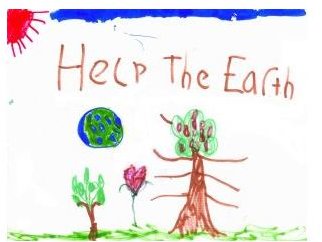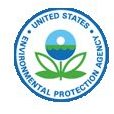The Federal Government: Going Green, Full Speed Ahead!
History of the Government’s Green Efforts
In this day and age of ecology watches and environmental protection, just what is the federal government doing about going green? Just like
any program our huge mammoth of a government undertakes, its inception dragged out for a while and its startup slogged quite a bit with a few stumbles, but things seem to be going along much better these days.
Way back in 1991, President George Bush (the elder) responded to public concern—and probably lots of nagging from environmentalists—by signing into law an Executive Order aimed at reducing pollution and conserving resources, specifically by reducing waste and recycling materials whenever and however possible. The Order identified the Federal Government as both the biggest producer of waste and the biggest consumer of recyclables. The Order was rather vague, with an exhortation to “promote recyclables by seeking them out” and producing energy from fossil fuels whenever possible.
More specifically, recyclables were identified as paper, plastic, metals, glass, used oil, lead acid batteries, and tires. Organic wastes, the Order stated, could be composted. Any entity contracting with the federal government would also be required to comply. A Federal Recycling Coordinator was appointed who would interact with heads of other agencies.
It sounded really great, until you got to the part where it lost its teeth: It was set to expire after five years.
Executive Order 13423 and Executive Order 13514

Two years later, with Bill Clinton in office, the Office of the Federal Environmental Executive took shape and remains active today. Its three-pronged mission seeks to reduce greenhouse gas emissions, reduce waste and utilize energy efficiently.
In 2007 Executive Order 13423 was introduced, while George Bush (the younger) was still in office. It was not codified until 2009, however, when President Obama swept it into his Omnibus Appropriations Act. Executive Order 13514 was enacted at that time to expand and extend EO 13423. It recognized eleven important areas:
Energy Efficiency. Beginning with a baseline established in 2003, energy intensity will be reduced by 30 percent by 2015. Total savings last year from green practices among federal offices amount to 907 kilowatt hours, which is equal to the amount of energy per year used by 35,000 households.
<strong>Greenhouse Gases (GHG)</strong>. Emission of such gases, as a result of energy efficiency programs, will likewise be reduced by 30 percent by 2015. Today, GHG savings amount to more than 47,000 metric tons of carbon equivalents (MTCEs), the same as eliminating 31,000 passenger cars from our roadways each year.
President Obama aims to reduce GHG direct emissions by 28 percent and indirect emissions by 13 percent by 2020. The standard of measurement of greenhouse gases, MTCE, is based on the global warming potential of carbon dioxide, which sets the standard with a “1” rating. Methane is next at 21, meaning its effect on global warming is 21 times greater than carbon dioxide. Nitrous oxide comes in next at 310, hydrofluorocarbon gases (HFCs) range up to 11,700, perfluorocarbon gases go up to 17,700, and sulfur hexafluoride are the worst at an outrageous 23,900.
Renewable Power. Utilization of renewable energy sources must increase so half of energy purchases come from new renewable resources.
Building Performance. Renovation and construction of buildings must reflect technologies to enhance environmental qualities plus reduce

energy usage and more. Vendors who can disclose their emissions data may gain priority in the awarding of contracts.
<strong>Water Consumption</strong>. Intensity of usage (measured in gallons per gross square foot) must come down by 16 percent by 2015.
Vehicles. Technology will explore alternative and hybrid fuels plus electric vehicles as soon as they are universally available.
Petroleum Conservation. While people everywhere talk about reduction of oil use, this specifically refers to a lowered amount of petroleum used by vehicles in federal fleets—by 2 percent annually.
Alternative Fuels. Likewise, the goal is to increase use of these fuels by 10 percent per year.
Pollution. Reduce or eliminate toxic wastes or pollutant chemicals. Last year’s solid waste savings amounted to over 15 million pounds, the amount that would be generated by 3,600 homes. The aim is to reduce or divert 50 percent of all non-hazardous solid waste by 2015
Procurement. Government purchasing managers must seek out bio-based products including recyclables and environmentally sound materials.
Electronics Management. The Environmental Protection Agency estimates that 10,000 federal agency computers are put out to pasture each and every week. Today’s guidelines mandate that 100 percent of all computers and monitors must meet Energy Star® guidelines and 100 percent of all products must be reused, recycled, donated, or sold when no longer needed. Here as in other areas, federal agencies compete amongst themselves to see which among them can reuse or recycle the most electronic products.
In 2011 this agency’s head, the Federal Environmental Executive, is Michelle Moore, who previously served as a senior vice president at the U.S. Green Building Council. Through her office in cooperation with the EPA, federal offices receive incentives through awards and recognition programs. Last year’s major winners reused, donated, or recycled more than 51,000 pieces of electronic equipment. More than 58,000 products were purchased that were approved by EPEAT, a global registry for greener electronics. Their careful reduction of greenhouse gases took the equivalent of 7,000 cars from our nation’s highways for a year.
But What Do Federal Workers Actually Do?

But what do they actually do, you are wondering. They are encouraged to use the same CFR bulbs in their offices as we are implementing in our homes. They install low-flow water fixtures. They search for viable disposal sources—intercity schools that can use the computers that are being replaced, for example. Participation in local transportation infrastructures—e.g., carpooling or public transportation—is encouraged. They create environmentally efficient sustainable landscapes.
In federal offices where people like you and me go to work, window blinds are used to let in the sun’s warm rays in the winter and block them in the summer. Programmable thermostats automatically adjust settings for times when there are more or fewer people in the building. Light switches are marked with reminders to turn off lights when leaving the room. Heating or cooling vents are kept free of clutter for optimal air circulation. Energy Star®-rated equipment selections include not only monitors and copiers or printers but even cell phone chargers. Those chargers use 30 percent less energy, and workers unplug them when not in use.
Learn more about how the federal government concentrates on going green on an EPA website for learning the issues about green living. The government has created home energy retrofit programs for homeowners who are unaware of their household’s total energy usage in the belief that having this knowledge will encourage homeowners to reduce energy usage.You can also subscribe to the GreenGov newsletter to keep up to date on what federal agencies are winning recognition for their efforts and ideas on how you can integrate those ideas into your own environment.
Resources
White House news release of January 2010. Federal Agencies Compete to Recycle and Reuse Electronic Products; Challenge Results in More than 15.8 Million Pounds of Electronics Reused or Recycled, at https://www.whitehouse.gov/administration/eop/ceq/Press_Releases/January_27_2010
U.S. Department of Energy Home Energy Score at https://www1.eere.energy.gov/buildings/homeenergyscore/
EPEAT at https://www.epeat.net/who-is-epeat/mission-2/
U.S. Environmental Protection Agency. Learn the Issues: Green Living. https://www.epa.gov/gateway/learn/greenliving.html
GreenGov Leader Newsletter Home Page: https://www.fedcenter.gov/assistance/newsletters/greengovleader/
Image Credits:
Logo of the U.S. Environmental Protection Agency
